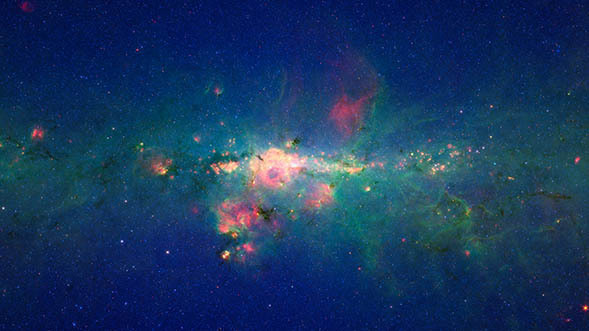
Spitzer's spacecraft referred to the uncooled portion of the observatory, including the Solar Panel Assembly, the Spacecraft Bus, and all of the components mounted in the bus that provided the Observatory engineering functions. These components included the solar arrays, the command and data handling unit, the reaction control subsystem, the telecommunications subsystem, the power generation and distribution subsystem, the pointing control subsystem, and the flight software.
The spacecraft consisted of two main parts: the solar panels, which provided electrical power to the spacecraft and shielded the Cryogenic Telescope Assembly from the Sun; and the spacecraft bus: an octagonal structure that housed the avionics and the warm electronics parts of the science instruments. The spacecraft provided electrical power to the science instruments, oriented and stabilized the telescope, stored and compressed the data from the science instruments for later transmission to Earth, executed the stored commands to carry out the planned observing schedule, and communicated with the ground system. All communications with Spitzer took place through NASA's Deep Space Network.



